|
Air Temp: +3C @ 7am start, +8C @ 10am finish Wind: 20km/h NW dropping to 10km/h NW Water Temp: 40.6F @ 7am, 42F @ 10am Fish: 3 Chinook, 3 Coho, 1 Laker, plus many more caught by friends in just a 3 hour span. RECAP:
The Salmon bite was ON for Lake Ontario but only lasted a week with the warm temps that arrived over this past week. Book your Great Lakes salmon trip this fall or next spring with Nomad Adventures before they are gone! Fishing has improved dramatically in Southern Ontario over the past 10 days. We had our first group of the season out on Lake Ontario for some spring trolling. Air: 10C @ 7am start, 19C @ noon finish Wind: 20km/hr W or less Water: 43-48F Fish: Brown Trout, Lake Trout, Coho Salmon Baits: body baits 3-4" long Things will only get better now until June. Be sure to contact Nomad Adventures for your next fishing adventure!
Some Lake Ontario steelhead are suffering a vitamin B1 deficiency making them incapable of synthesizing the sugars that are critical for giving them energy, therefore causing death.... scary!!
Tarnished Chrome
Is there a crisis on Lake St Clair? Reports of declining to non-existent bait fish population including gobies has the Michigan DNR on alert after seeing smallmouth bass starving long after the spawn is over. Watch the short video for their explanations as to why.
Jeff Wall | Nomad Adventures info@nomadac.com This article is intended to provide basic information to anyone wishing to take advantage of the spring Great Lakes Steelhead fishery. Although we are targeting migratory rainbow trout, there are many incidental catches that fill our day with joy and help us learn tactics for catching other species we may encounter. Rainbow Trout (Oncorhynchus mykiss) is a species of salmonid which is native to the cold water tributaries of Pacific Asia and North America. Steelhead is an anadromous(sea-run), or in this case, lake-run form of Coastal Rainbow Trout(Oncorhynchus mykiss Irideus) that have been introduced to Great Lakes tributaries. These fish spend their first 1-2 years in the tributaries, then enter the Great Lakes, to later migrate back to their natal streams when they reach spawning maturity. Primary spawning runs occur in the Great Lakes tributaries from late March to late May depending on the winter. Season and HabitatTiming as they say is everything. Especially on a sunny, warm spring day where the lake hasn't been stirred up much. If the water is clear and sun is high, then I'm already off the water looking at my pictures of the day's catch. A light wind is not a bad thing either provided it is in your favour. I prefer to fish a small chop when fishing steelhead and other minnow eaters. It displaces the baitfish more and allows for a wider, deeper zone to troll through. Fishing can be equally as good in the last two hours of daylight too. Finding a lightly wind blown warm shoreline near a creek or river can give whole new perspective on Great Lakes kayak fishing if you time it right! A spot where the sun has warmed all day long with a decent outflow nearby will start to get a trickle of minnows just before dusk that can provide fast and furious action as the sun disappears. Most of the time you are fishing less than 20' of water. Fish are shallow as 5' when the sun comes up and usually stay in less than 20' until then light starts to really penetrate then water. Try to find temperature gradients close to a mud line as they are your best indicator of where to start fishing. The transitioning water colour from brown to green is the area you want to focus on the most. This is where the bait are hanging out to avoid being in plain sight. Zig-zag trolling in and out of the mud line will surely get you bit. This is the season where kayaks have a real advantage over motorboats because of the relatively silent trolling capability. There is no need to run inline planer boards unless you do it to clear other rods when trolling multiple. If you have a leg propelled kayak like a Hobie Mirage series then things are even that much more simplified with hands free fishing. We primarily target spring Steelhead before they enter the tributaries to go about their reproductive business. Anytime that conditions allow and you feel you are capable of dealing with them is the right time to go. This article is not about safety so if you feel there may be a risk and are not comfortable with it, then do not go. Steelhead begin entering Great Lakes rivers in October and can still be around in early June. Spring runs are more consistent from April to mid May. Once they are safely higher up in the system, it is our practice to give them free passage. Although we are not afraid to go and pound on a fresh run of fish near the lower stretches of rivers, we prefer letting those who passed the gauntlet, to carry on and make lots of future angling opportunities. Especially on rivers that yield wild fish! Locating and Timing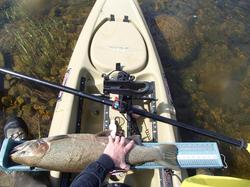 The old spawned out warrior in this picture is a catch we try to avoid but can't always when targeting migrating fish around rivers. For this reason we tend to concentrate our efforts in the lake near the river, rather than in it. He took about 5 mins to revive even in icy cold water. A chrome bright fish in the spring does not mean it is a fresh arrival! Many steelhead finish their spawning ritual before the river season opens, and they are almost fully healed from their wounds, leaving them with their beautiful silver sheen. These kelts are the most sensitive of the lot. They are extremely hungry and feed ravenously on anything they can find. They are also very susceptible to death if hooked and and fought to exhaustion with less oxygen in the warming rivers. They cannot recover since they have no reserve body mass to fall back on. Please do not target these fish! 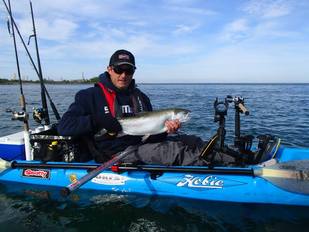 This spring hen was caught in Lake Huron near a major tributary. She was fully recovered from spawning and caught June 1 gorging herself on shiners when she hit a Live Target Rainbow Smelt. Anything resembling a shiner or smelt style minnow and fished near a river outlet on the Great Lakes will get bit... by something. It will most likely be a steelhead, coho salmon, or brown trout but could be any number of other species following the bait. Move around in the lake until you mark bait or spot it. By Howard Meyerson
GRAND RAPIDS, MI – Atlantic salmon will again be stocked at four Lake Huron locations in 2014. State officials are gearing up for the second round in a five-year experiment to determine if an Atlantic salmon fishery can be created there. Approximately 100,000 yearling Atlantics were planted in the lake during the spring of 2013, but none appeared in the catch so far, according to state fisheries officials. “We expect that all that to start rolling next summer,” said Todd Grischke, the Lake Huron basin coordinator for the Michigan DNR. “A lot can happen between now and then, but we will be evaluating the harvest each of the next two seasons and weaving that information into a long-term plan of where to go. “Next year we are looking at stocking 130,000 yearlings. And, if all goes well, we will look at a 150,000 more in 2015 and stick to the same study design.” Atlantic salmon may help fill the fisheries gap that was created in Lake Huron when Chinook salmon population collapsed in 2003 and 2004. Grischke and others are hopeful that they will fare better being a more opportunistic feeder. Chinook salmon rely on alewives which virtually disappeared. Atlantics are also thought a good compliment to the multi-species fishery that is developing in Lake Huron now. Walleye, steelhead, perch and some Chinooks are all being caught. STOCKING TO INCREASE OVER NEXT TWO YEARS The 2014 plan calls for increasing Atlantic stocking at each of the four locales that got them this year. The St. Mary’s River will get 50,000 yearlings in 2014, up from 35,000. Alpena/Thunder Bay will get 25,000 instead of 20,000, and the Au Sable River will get 35,000, up from 30,000. Lexington will get 20,000 rather than 15,000. “I’m really excited about it,” said Frank Krist, an avid angler from Rogers City and the chairman of the Lake Huron Citizen’s Advisory Committee, a group of anglers convened by the DNR for discussion and review. The group recently reviewed the plan. “The fish stocked this (past) spring will be big enough to be caught in the 2014 spring fishery,” Krist said. “And next fall about 30 to 50 percent of those fish will be mature enough to return to the stocking sites to spawn.” 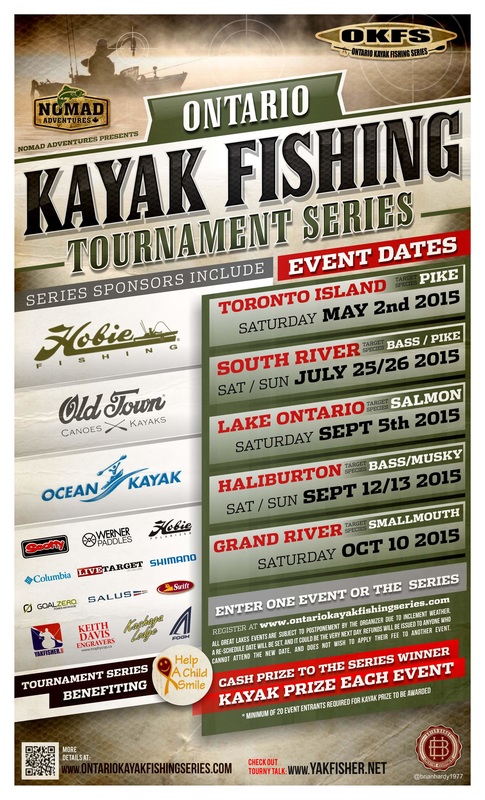 2015 Tournaments: Toronto Island Pike: May 2 - Old Town Predator 13* South River Bass/Pike: July 25-26 - Hobie Mirage Drive Outback/Revolution Lake Ontario Salmon: Sept 5 - Ocean Kayak Trident Ultra 4.3* Haliburton Bass/Musky: Sept 12/13 - TBA likely a Wilderness product Grand River Smallmouth: Oct 10 - Old Town Predator MX* (* min 20 pre-registered anglers to have kayak prize) This year OKFS is taking on a very different format that enables more winners. It will be a heavy multi-species rather than bass focus. There are only two 2-day events South River and Haliburton. Five events with a kayak for first place at each single day event plus a cash prize to the Champ. There will be a kayak raffled off at each of the two day events. A Female Angler division will be held at South River if we are able to get 10+ female anglers to attend. This will allow for a kayak prize to this new division. Series Champ is determined by the individual with the highest points total of any three multi-species combination. Single day totals only, allowing single day results from two-day events also. Upgrading allowed throughout duration of series. Full details and updates at http://www.ontariokayakfishingseries.com/info--registration.html Last spring we had the pleasure of guiding Sportsman360 TV host Owen Nolan and his guest co-host former NHLer Chris Simon for steelhead in Southern Ontario. It was the worst weather we had ever fished in let alone guide anyone! Things turned out very good, and the show will be airing for the first time tomorrow, and running all week long. Sportsman360TV: Ontario Steelhead - WildTV(Ch 393) Tues 7:30pm, Thurs 4:30pm, Fri 3:30pm World Fishing Network(Ch 426) Tues 10pm, Wed 1pm, Sat 1pm Will post the video in its entirety when it is released. Have a look if you get either of those channels. Here is the trailer Hope you enjoy! An interesting perspective on the Lake Huron salmon fishery from nearly four years ago, reads fairly accurately in consideration of what is happening today. Not 100% in agreement with what is going on with Lake Huron salmon is widespread. Some areas appear to be making a comeback in the Ontario region at least. Coho's, Pinks, Chinook, and yes even some Atlantics have shown up in recent years... thanks LSSU! Not big numbers or size by any means but a welcome sight nonetheless. Collapse of Lake Huron salmon fishery offers lessons
Jeff Alexander | Muskegon Chronicle By Jeff Alexander | Muskegon Chronicle Follow on Twitter on April 19, 2011 at 12:00 PM The Great Lakes provide an important food source for the region and the country. As such, the productivity of the lakes depends on a variety of human and environmental factors. The food web and interlocking food chains in the lakes are complex and ever-changing. In the mid-1990s, when disease ravaged the Lake Michigan chinook salmon fishery, anglers flocked to Lake Huron . The glory days of Lake Huron’s salmon fishery lasted roughly a decade, until a combination of factors — all driven by human activities — caused the salmon population to crash in 2003-04. It has not recovered. Michigan anglers who fished out of 10 Lake Huron ports last year caught 3,200 chinook salmon, a record low. That was a 95 percent drop from the average annual catch of 75,000 at those same ports between 1986 and 2003, according to state data. “Last year ... about as low as it could get,” said Jim Johnson, a research biologist for the Michigan Department of Natural Resources. Lake Huron’s salmon crisis is a cautionary tale for Lake Michigan’s still-thriving salmon fishery: The lakes share many of the environmental factors that caused Lake Huron’s salmon fishery to collapse. Huge numbers of foreign quagga mussels are wreaking havoc on the food chain in both lakes. The number of prey fish, the small fish that salmon and other large fish eat, has plummeted in recent years. The fall of Lake Huron’s chinook population was quick, dramatic and painful — for the fish, anglers and coastal communities that reaped millions of dollars in economic benefits from the fishery. Authors: Parsons, John W.
Publication Year: 1973 Book or Record Title: History of salmon in the Great Lakes, 1850-1970 Extent of Work: 80 Series Title: U. S. Bureau of Sport Fisheries and Wildlife Technical paper no. 68 Abstract: This history of the salmon in the Great Lakes describes the decline and extinction of the Atlantic salmon (Salmo salar) in Lake Ontario in the 1800's; the failure to establish, by salmon culture, permanent or sizable populations of Atlantic or Pacific salmon in any of the Great Lakes in 1867-1965; and the success of the plantings of coho (Oncorhynchus kisutch) and chinook salmon (O. tshawytsha) in the Great Lakes, in 1966-70 -- particularly in Lake Michigan. Despite plantings of 5 million fry and fingerlings from Lake Ontario stocks in 1866-84, the native Atlantic salmon in Lake Ontario became extinct in the late 1800's primarily because tributaries in which they spawned were blocked by mill dams. Plantings of 13 million chinook salmon and landlocked and anadromous forms of Atlantic salmon in Lake Ontario and the other Great Lakes in 1873-1947 failed completely. The first species to develop a self-sustaining population was the pink salmon (O. gorbuscha), which was planted in Lake Superior in 1956; however, it has not become abundant. A salmon fishery finally was established when 15 million coho salmon and 6 million chinook salmon were planted as smolt in the Great Lakes in 1966-70. In 1970, for example, 576, 000 coho salmon (12% of those planted in 1969) were caught by anglers in Lake Michigan. Most weighed 5 to 10 pounds (2.3-4.5 kg). Sport fishing for salmon was fair in Lakes Superior and Huron, and poor in Lakes Erie and Ontario. By 1970, natural reproduction of coho, chinook, pink, and kokanee (O. nerka) salmon had occurred in some tributaries of one or more of the upper three Great Lakes. It is expected, however, that the sport fishery will continue to be supported almost entirely by planted fish. |
FISHING NEWS ONTARIOOntario and Great Lakes region salmon, steelhead, and migratory trout fishing articles, information, news, and reports. Stay up to date on our most recent trips, events, tournaments, and general news on adventure fishing and kayak fishing in Ontario and Canada. Archives
April 2021
Categories
All
Links |

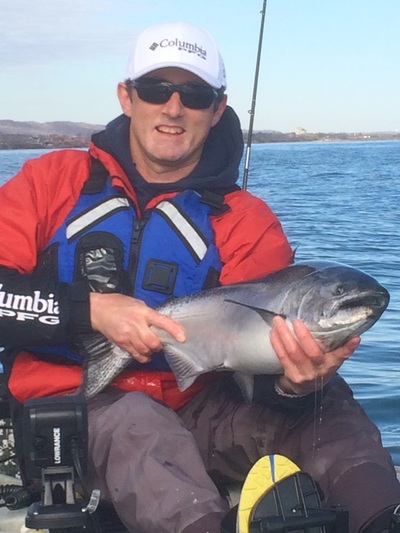
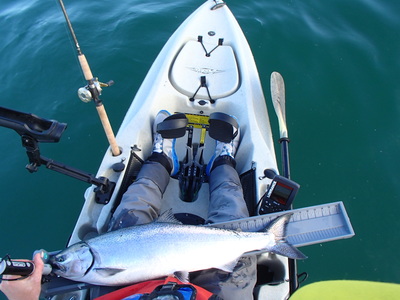
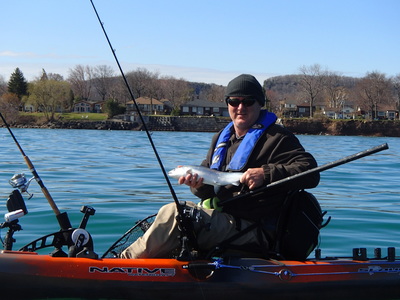
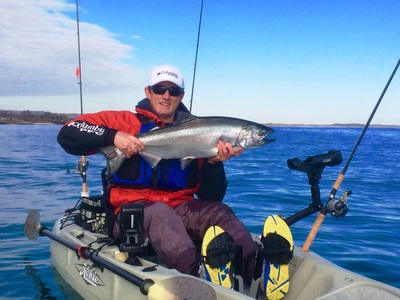
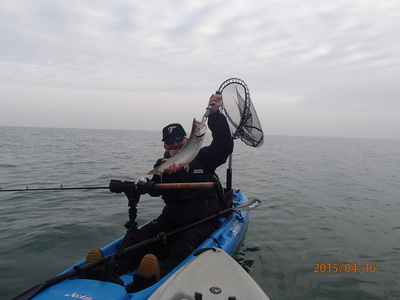
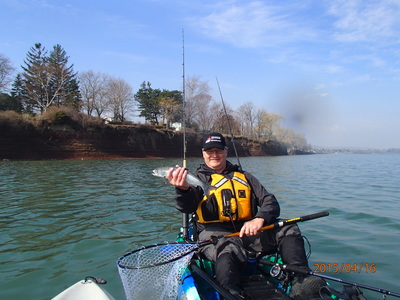
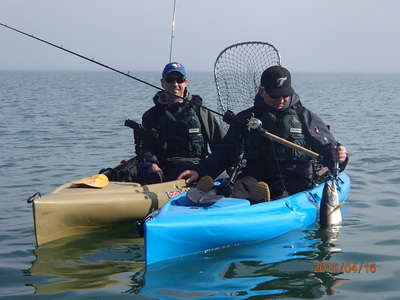
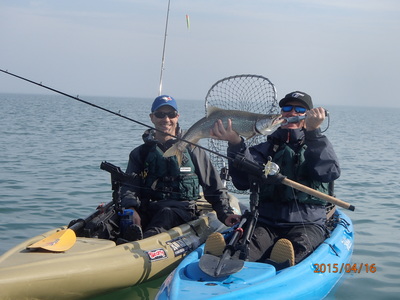
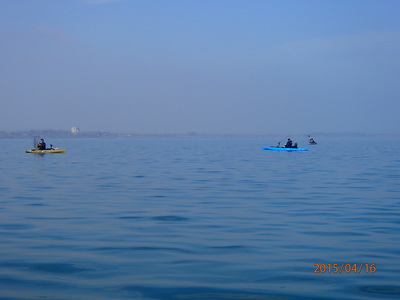
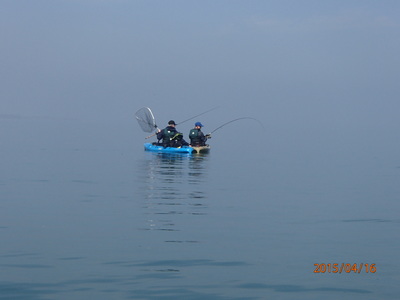
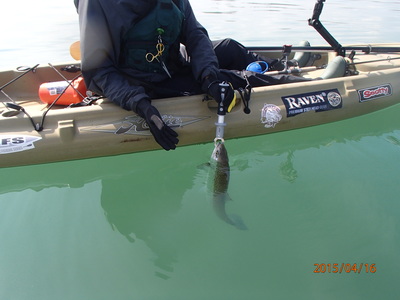
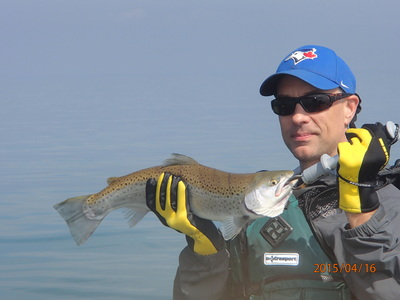
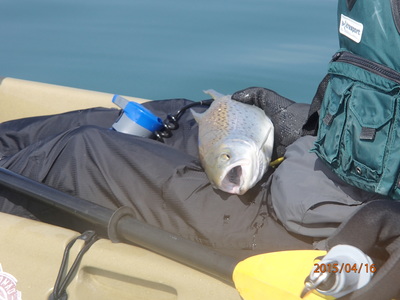
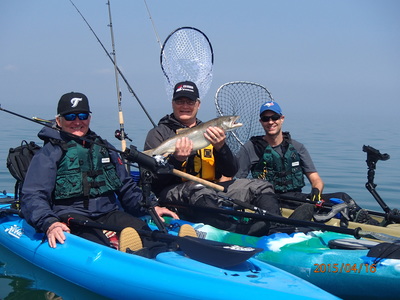
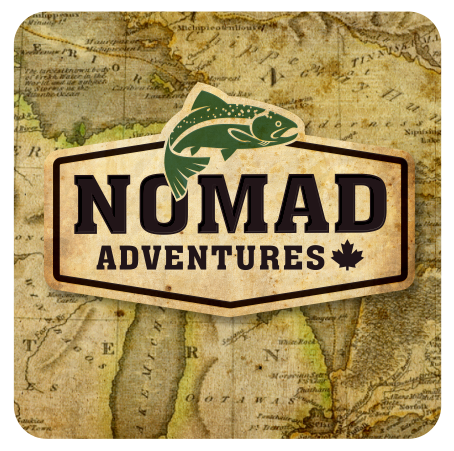

 RSS Feed
RSS Feed